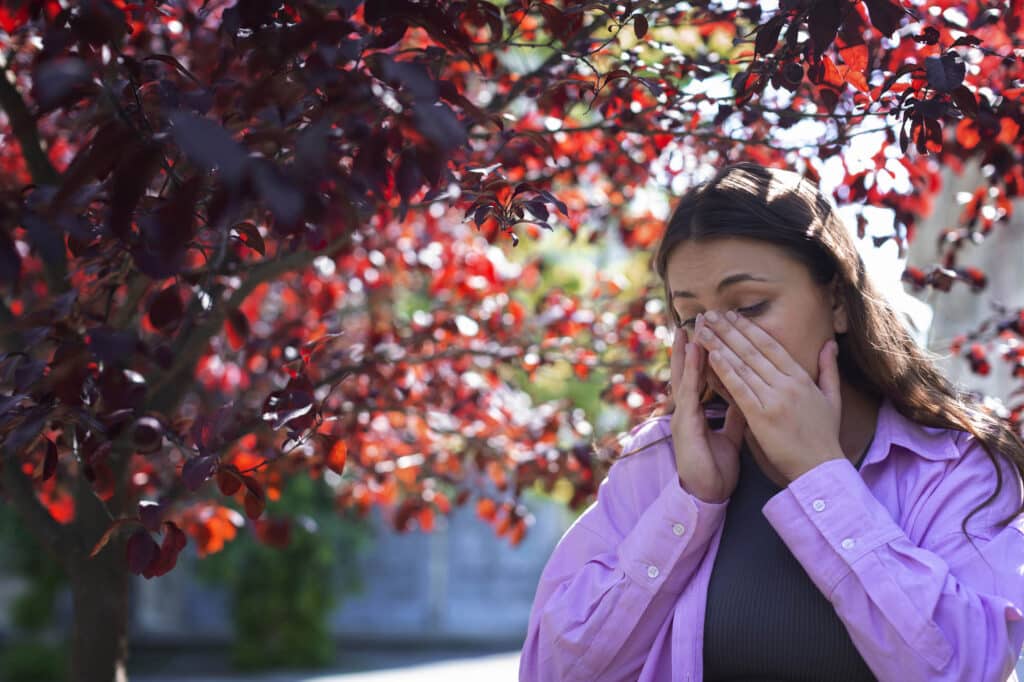Allergies tend to be associated with a runny nose, scratchy throat, or just an increased level of sneezing, but allergy symptoms come in many varieties. Unfortunately for many, allergies can cause all types of discomfort for the eyes, ranging from swelling to a persistent itchy feeling. For some people, eye allergies can be a seasonal annoyance, while for others, they can be a year-round struggle that significantly affects their daily life.
If you find that your eyes are getting red, swollen, and/or itchy, then it is highly possible that an allergic reaction is to blame. Common allergens such as pollen, pet dander, dust, and even freshly cut grass can trigger these uncomfortable symptoms. In order to rid yourself of this frustration, it’s important to identify what is causing the allergic reaction and take proactive steps to manage the symptoms.
Understanding Eye Allergies
Eye allergies, or allergic conjunctivitis as it is known in the scientific community, are caused by a misfiring of the immune system—like any other allergic reaction. When you have an allergic reaction, your body perceives a harmless substance as a threat and releases histamine, a chemical that causes swelling and inflammation. With eye allergies, this makes the blood vessels in your eyes swell, leading to redness, excessive tearing, and itchiness.
Eye allergies can often be confused with other eye conditions, such as dry eye syndrome or infections. However, the key difference is that allergies are not contagious, and their symptoms tend to improve once exposure to the allergen is reduced or eliminated.
Types of Eye Allergies
There are several types of eye allergies, each with its own set of triggers:
- Perennial Conjunctivitis – These allergies persist year-round and are usually triggered by indoor allergens such as dust mites, pet dander, mold, and cockroach droppings.
- Seasonal Allergic Conjunctivitis (SAC) – The most common type of eye allergy, which is triggered by airborne allergens like pollen from grass, weeds, and trees. Symptoms often worsen during spring and fall when pollen counts are at their highest.
- Contact Conjunctivitis – This type of allergic reaction is triggered by direct contact with allergens such as makeup, perfume, cleaning products, or other chemicals that come into contact with the eyes.
- Giant Papillary Conjunctivitis (GPC) – A more severe form of allergic reaction caused by the prolonged use of contact lenses or exposure to protein buildup on the lenses. GPC can cause discomfort, excessive mucus production, and an increased sensitivity to contact lenses.
Common Symptoms of Eye Allergies
While most allergic symptoms tend to develop quickly, some may take up to two to four days after exposure to appear. Here are some key symptoms to watch for:
- Itchy Eyes – A persistent urge to rub the eyes due to irritation and inflammation.
- Red, Irritated Eyes – Bloodshot eyes caused by inflamed blood vessels.
- Swollen Eyelids – Puffiness around the eyes, making them appear swollen or puffy.
- Tearing or Runny Eyes – Excessive watering of the eyes as the body tries to flush out the allergen.
- Sensitivity to Light – A heightened sensitivity to bright lights, which can make it uncomfortable to be in well-lit environments or outdoors.
- Soreness, Burning, or Pain – An uncomfortable sensation in the eyes that may feel like a burning or stinging feeling.
Preventing and Managing Eye Allergies
The good news is that there are many steps you can take to prevent and manage eye allergies effectively. Here are some of the best practices to help reduce symptoms and protect your eyes:
1. Reduce Exposure to Allergens
- Check daily pollen forecasts and try to stay indoors when levels are high.
- Keep windows closed in your home and car, and use air conditioning to filter out allergens.
- Use an air purifier to reduce indoor allergens, especially if you have pet dander or dust allergies.
- Wash your hands and face frequently, especially after being outside.
- Change your clothes when coming indoors to avoid bringing allergens into your living space.
2. Avoid Rubbing Your Eyes
- Rubbing your eyes can worsen symptoms by spreading allergens and increasing irritation.
- Instead of rubbing, use a cool compress over your eyes to help relieve itchiness and swelling.
3. Use Artificial Tears
- Over-the-counter artificial tears can help flush out allergens and soothe dry, irritated eyes.
- Keep a bottle handy, especially during allergy season.
4. Wear Sunglasses Outdoors
- Sunglasses act as a barrier, preventing pollen and other airborne allergens from getting into your eyes.
- Wraparound sunglasses provide extra protection by covering more of the eye area.
5. Clean Contact Lenses Properly
- If you wear contact lenses, make sure to clean and store them properly to prevent allergen buildup.
- Consider switching to daily disposable lenses to minimize the risk of allergens sticking to your lenses.
- If allergies are severe, wearing glasses instead of contacts during peak allergy season may provide relief.
6. Try Over-the-Counter Allergy Medications
- Antihistamine eye drops can help reduce itching and redness.
- Oral antihistamines can help control overall allergy symptoms but may cause dryness in the eyes.
- Decongestant eye drops can temporarily reduce redness but should not be used for more than a few days to avoid rebound redness.
7. Consult an Eye Doctor If Symptoms Persist
- If your symptoms do not improve with over-the-counter treatments, see an eye doctor for further evaluation.
- Your doctor may prescribe stronger antihistamines, mast cell stabilizers, or corticosteroid eye drops for severe cases.
- Allergy testing may also help identify specific triggers so you can take more targeted preventative measures.
Eye Allergies and Keratoconus
Eye allergies, particularly allergic conjunctivitis, play a significant role in the progression of keratoconus, a condition that weakens the cornea and affects vision. Studies have shown a strong link between allergies, frequent eye rubbing, and the worsening of keratoconus. Persistent eye rubbing, often triggered by the itchiness and irritation associated with allergies, can contribute to corneal thinning and structural changes, accelerating the disease. For individuals with keratoconus or those at risk, managing even mild allergic conjunctivitis is essential. Proper allergy control through antihistamines, lubricating eye drops, and avoiding allergens can help reduce eye rubbing and protect corneal health. Recognizing and addressing allergies early can be a crucial step in preventing keratoconus from progressing.
Conclusion
Eye allergies can be a frustrating and uncomfortable experience, but understanding their causes and symptoms can help you manage them more effectively. By taking proactive steps to reduce exposure to allergens, using over-the-counter treatments, and seeking medical advice when necessary, you can keep your eyes comfortable and allergy-free. If your symptoms persist or worsen, scheduling a consultation with one of our eye care professionals is the best way to ensure long-term relief and maintain optimal eye health. Taking care of your eyes today will help protect your vision for the future!





